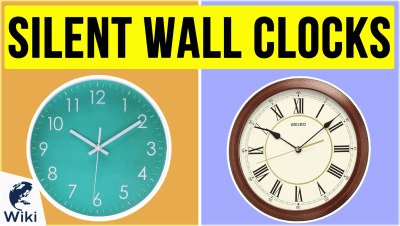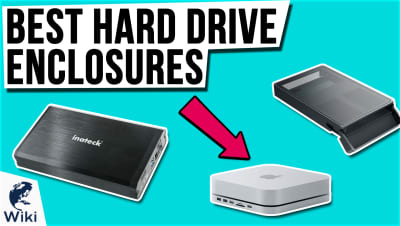Top 5 Ways To Take Screenshots In Windows
Taking screenshots should be second nature to anyone who uses a computer. That's true whether it's just a tool to write term papers and browse Facebook, or you're an active developer who games frequently and has deeply held opinions about whether Reddit or 4chan is better. These useful methods will help you keep track of your digital life in the simplest way possible. This video was made with Ezvid Wikimaker.
How Do I Take Screenshots In Windows?
- Snipping Tool. A built-in tool with options for modes and delay.
- Print Screen. A simple button press that copies your desktop to the clipboard.
- Windows + Print Screen. The same as the previous, but it immediately saves to your screenshots folder.
- Windows + Shift + S. Similar to print screen, except you can select a portion of the desktop rather than the whole.
- Alt + Print Screen. Copies your active window to the clipboard.
Screenshots vs. Screen Recordings
Sometimes it is more expedient to take a screenshot than to make a video of what's happening. Other times, the opposite is the case. Here is a quick look at when you might want to use one of these simple tricks, and when you might want to download a free screengrab software.
| Circumstance | Screenshot | Screen Recording |
|---|---|---|
| Little to no editing required | ||
| Immediate turnaround | ||
| Can show elaborate process | ||
| Easy to annotate | ||
| Can include sound |
When Should I Take Screenshots?
The reason to take screenshots depends on your circumstances. Here are some examples of when it will be useful to know how to take a quick grab.
- Saving a meme. Not all websites have a good way to save an image to your device. In that case, a quick screenshot can be a lifesaver. The artifacting that results is even its own aesthetic.
- Showing off your work. Writers, coders, and other artists need to keep clips of their work when applying for other work. Having quick images is a good way to do so.
- Giving information to technical support. Computers and the internet are complicated technologies. Having hard proof of crashes or other issues is crucial to getting experts to help you fix them
- Sharing an accomplishment. Whether it's a great KDR in a shooter or MOBA or a particularly stellar SAT score, a quick grab is the best way to show your achievements off to a friend or relative.
How To Take A Screenshot On A Mac
Conclusion
It's best to know how to take a screenshot before you need to. Having a quick trigger finger can help you with everything from capturing your favorite moment in a game or show to making sure that an error message or even a password doesn't slip from your memory before you miss it. Once you have this knowledge at your fingertips, you'll never miss an important moment on your screen again.
In Depth
Screenshots are useful in a variety of ways. When contacting tech support for a website, having a screen capture of the problem is a helpful tool. You can use them to save important information that you may need later, like test scores and payment information. If you're a writer or programmer, you can use screen captures of your work for your portfolio. There are programs you can use, but Windows includes plenty of ways to take screenshots without downloading any software. Here are 5 different methods.
The #1 way to take screenshots in Windows is the Snipping Tool. It's simple to use and lets you capture as much or little of the screen as you want. To open it, type "snipping tool" into the search bar next to the Windows button at the bottom of your screen and click on the application. Click on "Mode" and choose the type of snip you want to capture, then hit "New." Use the cursor to select the area you want to take a screenshot of. You can also add a delay of 1 to 5 seconds, which is useful if you want to include the right-click or start menu in your capture.
Once you take your screenshot, it will open in a new window. Here, you can use the toolbar at the top to highlight and draw on it. When you're finished editing, be sure to save it before exiting the program.
Here, you can use the toolbar at the top to highlight and draw on it.
#2 is the print screen button, which is typically at the top of the keyboard. If you want to capture the entire screen, this is the easiest way to do it. How you use it depends on the layout of your keyboard. If it's on a button by itself, all you have to do is push it to take a screenshot. But if your print screen button has another use, such as "insert" or "system request," you might need to hold down the function key while you press it.
The print screen button will copy the screenshot to your clipboard. To view and edit it, open Microsoft Paint and click the "Paste" button in the top left corner, or press Control + V to paste it into the program. From here, you can crop and edit your screen capture using the toolbar at the top. It will be deleted from your clipboard and replaced by the next screenshot you take, so make sure to save it after you're finished editing.
The #3 method for taking screenshots also uses the print screen button. Holding down the Windows key before pressing it saves the screen capture as a file on your computer. If your keyboard has a function button, you may need to hold it down in addition to the Windows key. The screen capture will automatically appear in your pictures under the "Screenshots" folder. This way, you won't have to paste it into a document to save it. This method is especially useful if you want to take several screenshots in a row without saving each one separately.
This way, you won't have to paste it into a document to save it.
#4 is a keyboard shortcut for Windows 10 users. Press the Windows key plus Shift and S to capture a specific portion of your screen. This is a quick and easy way to take screenshots when you don't want to include the entire page. When the cursor appears, use it to select the part of the screen you want to capture. The screenshot will be copied to your clipboard automatically.
#5 is another print screen method. Holding down the Alt key before pressing print screen captures only the window or application you are currently using. If your keyboard has a function button, you might need to hold it down along with the Alt and print screen keys.
If you need additional editing tools or a screen recording function, you may benefit from downloading a program or browser extension for your screen captures. But if you just want to take screenshots and make some basic edits, these built-in methods for Windows should cover all your needs.















